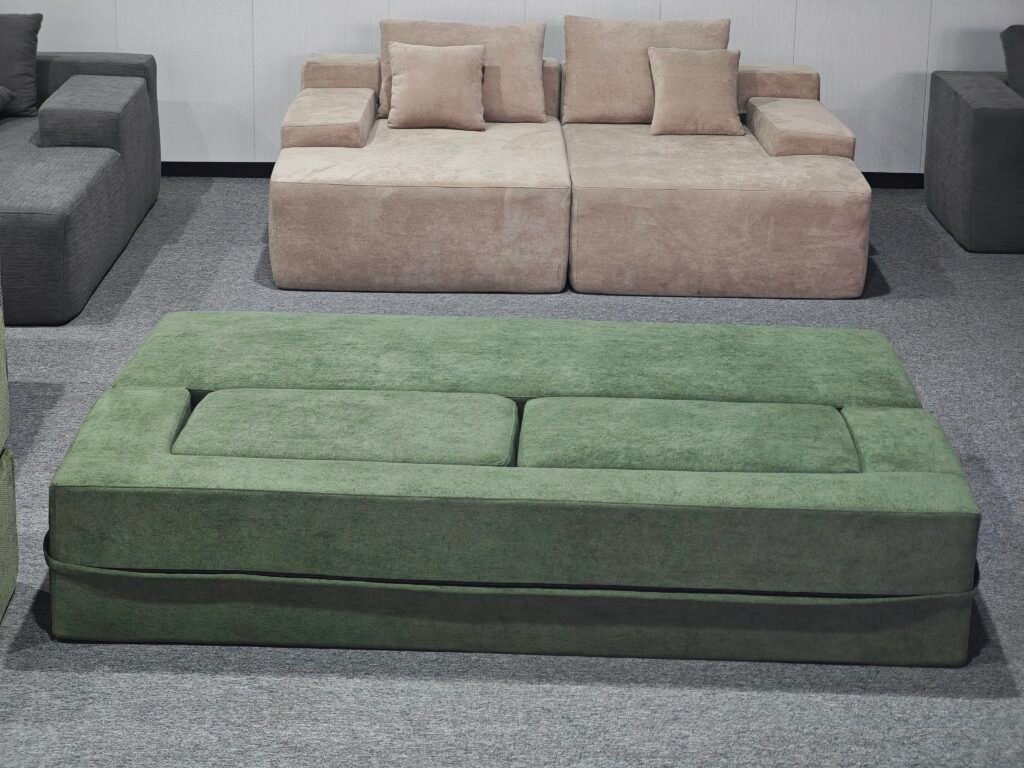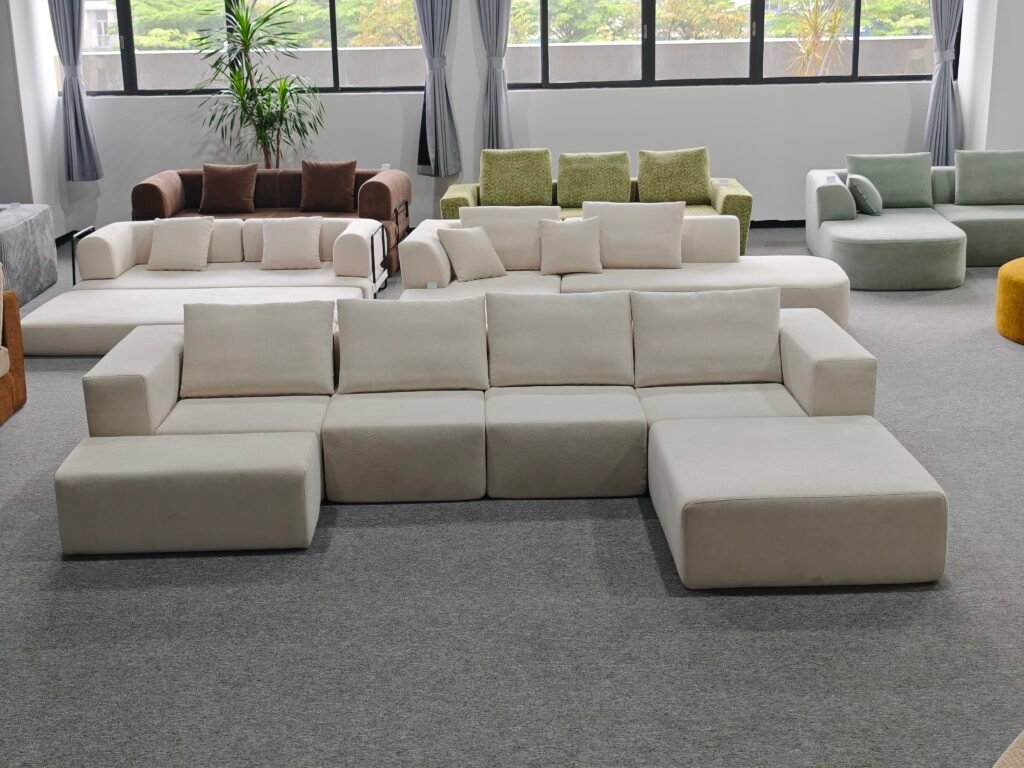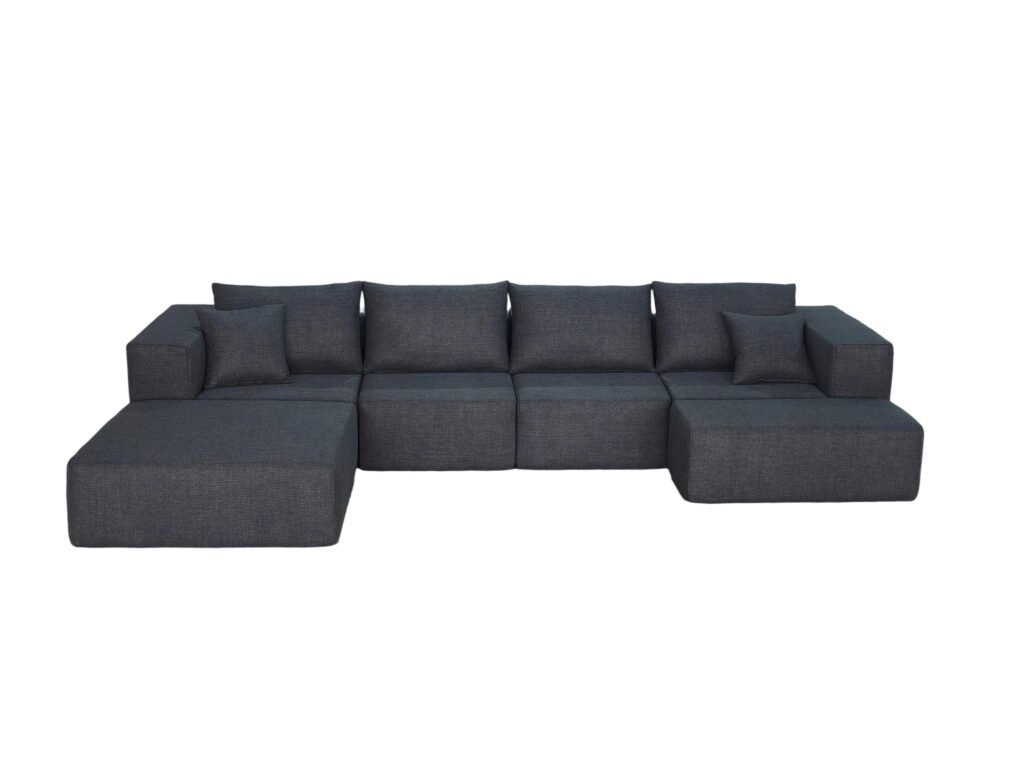The furniture industry is undergoing a significant transformation driven by innovation in product design, manufacturing, and logistics. Among these innovations, the compressed sofa has emerged as a game-changer, offering a practical, space-saving, and cost-efficient solution for both manufacturers and consumers. However, the success of compressed sofas depends not only on the product itself but also heavily on the packaging design that protects, markets, and delivers these compact yet complex items.
At Modular Sofas, we understand that packaging is more than just a container; it is the first physical touchpoint between the customer and the product. Thoughtful, innovative packaging design can enhance user experience, reduce environmental impact, and optimize shipping efficiency. This article explores the current trends shaping compressed sofa packaging design in 2025, highlighting how these trends align with industry demands, sustainability goals, and consumer expectations.


The Role of Packaging in Compressed Sofa Success
Compressed sofas rely on advanced vacuum or spring compression technologies to reduce their volume by up to 70-80%, enabling them to fit into compact, manageable packages. This packaging approach offers multiple advantages:
- Reduced shipping and storage costs due to smaller package sizes.
- Improved handling and delivery, especially in urban environments with limited access.
- Enhanced customer convenience with easy unpacking and quick sofa recovery.
- Environmental benefits through reduced packaging materials and carbon emissions.
However, packaging must also protect the sofa during transit, communicate brand values, and comply with regulatory requirements. The intersection of functionality, sustainability, and aesthetics is where packaging design becomes an art and science.
Key Trends in Compressed Sofa Packaging Design for 2025
Neo-Minimalism with Bold Contrast
Minimalism continues to dominate packaging design, but in 2025 it evolves into neo-minimalism — a refined style that embraces vast negative space, clean geometric shapes, and carefully chosen visual elements. For compressed sofas, this means packaging that is visually striking yet uncluttered, focusing on brand identity through bold typography and simple color palettes.
This approach reduces unnecessary printing and ink use, aligning with sustainability while creating a premium, modern look that appeals to design-conscious consumers.
Eco-Visibility and Sustainable Materials
Sustainability remains at the forefront of packaging innovation. Consumers increasingly demand transparency about environmental impact, prompting brands to showcase eco-friendly credentials directly on packaging.
Compressed sofa packaging now often incorporates:
- Recyclable cardboard and paperboard with minimal plastic.
- Biodegradable films replacing traditional shrink wrap.
- Soy-based or water-based inks for printing.
- Clear labeling about recyclability and sustainability efforts.
This "eco-visibility" trend not only reduces waste but also builds consumer trust and brand loyalty.
Functional and Protective Design
While aesthetics matter, the primary role of compressed sofa packaging is protection. Advances in packaging engineering have led to:
- Multi-layered cardboard structures that absorb shocks and prevent deformation.
- Custom-fit inserts and braces made from recycled materials to secure the sofa during transit.
- Water-resistant coatings that protect against moisture damage without compromising recyclability.
- Easy-open features such as perforations and pull tabs that improve unpacking experience.
Manufacturers like Modular Sofas combine these features to ensure sofas arrive in perfect condition, ready to decompress and delight customers.


Smart Packaging and Interactive Elements
Technology integration in packaging is an emerging trend, adding value beyond protection:
- QR codes and NFC tags embedded on packaging provide access to unpacking instructions, warranty registration, and care tips.
- Augmented reality (AR) experiences allow customers to visualize sofa configurations in their own spaces.
- Smart sensors can monitor package conditions during shipping, alerting stakeholders to potential damage.
Such innovations enhance transparency, customer engagement, and post-sale support.
Compact and Modular Packaging
Compressed sofas are inherently modular, and packaging design reflects this by:
- Designing uniform, stackable boxes that optimize container loading.
- Creating multi-pack solutions for modular sofa sets, allowing flexible shipment and assembly.
- Using lightweight materials to reduce overall package weight without sacrificing durability.
These strategies improve logistics efficiency and reduce carbon footprint.
Curated Frames and Artistic Presentation
Inspired by the "Curated Frames" trend, some brands are elevating packaging to an art form by incorporating:
- Framed artwork or photography on box surfaces.
- Intricate line drawings and textures that convey craftsmanship.
- Minimalist typography that complements visual elements.
This approach positions compressed sofas as premium lifestyle products, appealing to discerning consumers.
Tactile Interaction and Texture
Packaging that invites touch through textured surfaces or embossing creates a memorable unboxing experience. For compressed sofas, this might include:
- Soft-touch matte finishes on cardboard.
- Embossed logos or patterns that reinforce brand identity.
- Textured protective sleeves that add grip and luxury feel.
These sensory elements enhance perceived value and customer satisfaction.
Sustainability in Compressed Sofa Packaging
Sustainability is not just a trend but a necessity. Compressed sofa packaging reduces environmental impact in several ways:
- Volume reduction lowers transportation emissions by fitting more units per container.
- Material reduction through minimalistic design and elimination of excess plastics.
- Use of renewable and recyclable materials reduces landfill waste.
- Encouragement of circular economy by designing packaging for reuse or easy recycling.
Modular Sofas is committed to advancing these practices, sourcing FSC-certified cardboard, minimizing plastic use, and educating customers on proper disposal.


Packaging Design Challenges and Solutions
Designing packaging for compressed sofas involves balancing competing demands:
- Protection vs. Material Use: Ensuring durability without excessive packaging.
- Cost vs. Sustainability: Eco-friendly materials can be more expensive but yield long-term benefits.
- Branding vs. Minimalism: Communicating brand story within minimalist constraints.
- User Experience vs. Security: Easy opening without compromising package integrity.
Innovative solutions include modular packaging components, smart materials that adapt to stress, and digital tools for design optimization.
Table: Summary of Key Packaging Design Trends for Compressed Sofas in 2025
| Trend | Description | Benefits | Examples in Compressed Sofa Packaging |
|---|---|---|---|
| Neo-Minimalism | Clean designs with bold contrast and ample negative space | Reduced ink use, modern aesthetic, brand focus | Simple box with bold logo and limited color palette |
| Eco-Visibility | Use of sustainable materials and clear eco-labeling | Builds trust, reduces environmental impact | Recyclable cardboard with printed recycling info |
| Functional Protection | Multi-layer cardboard, inserts, water-resistant coatings | Ensures product safety during transit | Custom-fit recycled cardboard inserts |
| Smart Packaging | QR codes, NFC, AR for interactive customer engagement | Enhances user experience, provides added value | QR code linking to unpacking video and warranty |
| Compact & Modular | Uniform, stackable boxes for optimized logistics | Improves container utilization, reduces shipping costs | Stackable boxes sized for modular sofa components |
| Curated Frames | Artistic framed visuals and intricate line art | Elevates perceived value, appeals to premium market | Box artwork resembling gallery frames |
| Tactile Interaction | Textured surfaces, embossing, soft-touch finishes | Memorable unboxing, reinforces brand identity | Embossed logo and soft-touch matte cardboard |
The Future of Compressed Sofa Packaging Design
Looking ahead, packaging design for compressed sofas will continue to evolve with advances in:
- Smart materials that self-heal or indicate damage.
- AI-driven design tools that optimize material use and protection.
- Fully biodegradable packaging that decomposes harmlessly.
- Enhanced digital integration for seamless customer journeys.
- Customization at scale allowing personalized packaging experiences.
These innovations will further align packaging with sustainability, brand differentiation, and consumer expectations.
Conclusion
Packaging design is a critical factor in the success of compressed sofas, influencing logistics efficiency, customer satisfaction, brand perception, and environmental impact. The current trends in 2025 reflect a balanced focus on minimalist aesthetics, sustainability, functionality, and technological integration. Modular Sofas embraces these trends by delivering compressed sofa packaging solutions that protect products, reduce waste, and enhance user experience.
As compressed sofas continue to reshape the furniture market, innovative packaging design will remain at the forefront—turning a simple box into a powerful brand ambassador and a key enabler of sustainable commerce.
For more information on Modular Sofas’ compressed sofa products and packaging innovations, please visit modular-sofas.com.